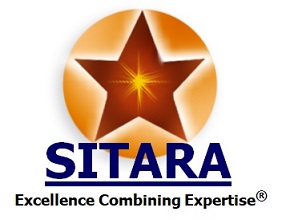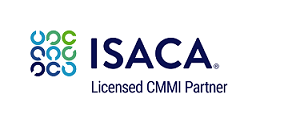|
|
.· ·. .· |
||
| ASK SITARA | |||
| LATEST DEVELOPMENTS AT SITARA | |||
| REGISTRATION FORM | |||
|
|
|||
Applying the Software & People CMM to a Learning Environment
SITARA Continuing Education Points: 2 points
TUTORIAL DURATION : 2 Days
PREREQUISITES: Understanding the CMM & People Issues in SEI-CMM Implementation
TUTORIAL
OBJECTIVES:
![]() Factors that influence the
creation of a learning software organization will be described
Factors that influence the
creation of a learning software organization will be described
![]() In depth understanding of the relationship between the 5
core disciplines of Systems Thinking, Personal
In depth understanding of the relationship between the 5
core disciplines of Systems Thinking, Personal
Mastery, Mental Models, Shared Vision & Team Building to accomplish larger organizational objectives
using the CMM initiatives will be explored.
![]() This background is very critical for building learning communities or CoPs
(a PCMM Level 3 and Level 4 requirement)
This background is very critical for building learning communities or CoPs
(a PCMM Level 3 and Level 4 requirement)
ABSTRACT:
Application
of the concepts of “The Fifth Discipline” by Peter M. Senge, as an
effective leverage tool to exploit the benefits from implementing the
People-CMM and Software-CMM frameworks in learning organizations is
examined in a holistic manner. Peter Senge’s seminal work is coupled
with field experiences from implementing the Software Capability Maturity
Model (SW-CMM) and People Capability Maturity Model (P-CMM) frameworks in
leading multinationals to provide insights into how to create and sustain
a successful process culture. This tutorial describes how to exploit the
synergy among the two reference frameworks of the CMM and concepts such
as, Systems Thinking, Personal Mastery, Mental Models, Shared Vision &
Team Building to accomplish larger organizational objectives. The central
message of The Fifth Discipline is that organizations work the way they
work, because of how people and other constituencies in it think and
interact. Only by improving this collective thought, can we change deeply
embedded policies and practices for the better. And, only by improving the
interaction among all constituencies can shared visions and shared
understandings, with new capacities for coordinated action, be
established. This notion is pretty new for most of us.
The two CMM frameworks provide ample scope to define the stakes in the
ground while providing for a boundary to operate. Organizations have
confused the real intent behind the CMM by assuming that Level 5 was to be
the ultimate. They have failed to understand that it might sometimes not
be possible to be there at all because of the business model! It requires
Statistical Process Control to be in place for an organization to be at
level 4. If an organization has a simplistic delivery process with
predictable inputs, and a predictable process with zero-known defects at
every given process step, with almost no process variation, then, is it
possible to have SPC instituted? Again, if process & product
attributes such as non-compliance and defects are viewed in binary terms
without ever having to define a grey scale of measurement, then what is
the meaning of variance when a random variable is no longer random but can
assume one of two values? It is challenging to think that while we
redesign the manifest processes of our organizations, we must consider
business objectives. This also requires a redesign of the internal
structures of our "mental models." But anything less will fall
short of the changes required. Companies that have "reengineered
themselves" around horizontal processes often discover that they
"have little or no experience in actually operating in such an
environment," says Michael Hammer. "Radical change in how work
is done inevitably leads to the definition of new jobs with new skill
requirements, which in turn demand new kinds of people."


